To racers and fans of NHRA Stock Eliminator, the Ficacci name is known for campaigning some of the quickest and fastest Chevrolets in the category. The family has a long history, with Steve Ficacci Sr. having raced since the 1970s.
The patriarch competes in his mightily quick 1968 A/S (and sometimes AA/S Camaro) Camaro has won races and set a multitude of records.
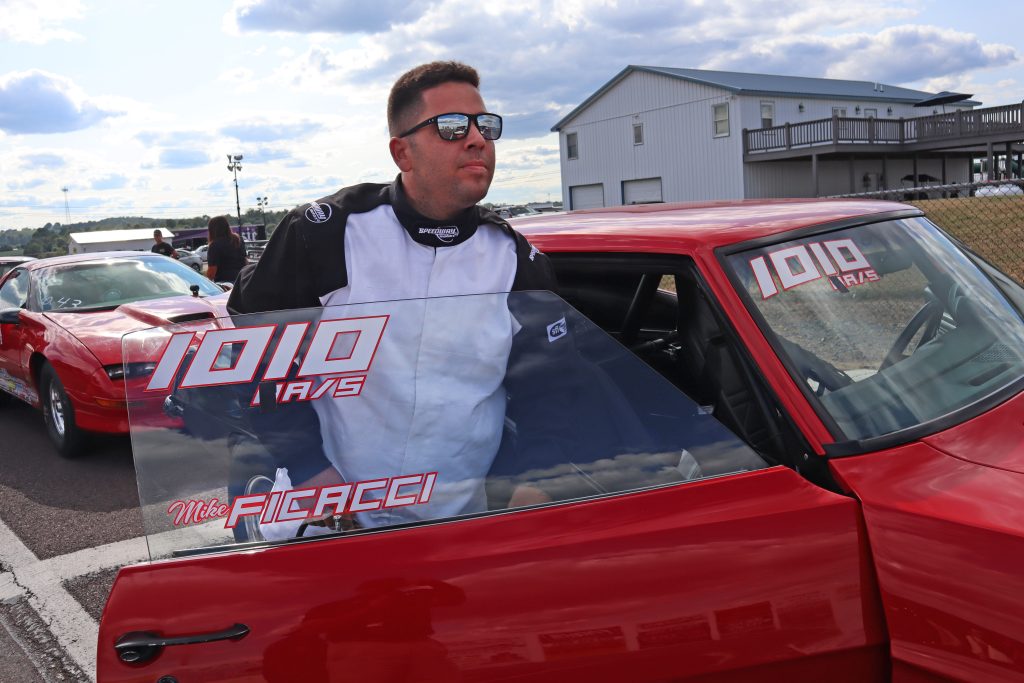
Ficacci’s four sons, Steve Jr., Bobby, Dave and Mike, also compete in Stock, and as you’d imagine, they race quick Bow-Tie machines. The fleet consists of Stevie’s 1971 350 D/S Camaro, Bob’s 396 1970 A/S Nova, and Dave’s AA/SA Camaro.
The youngest of the clan, Mike, recently acquired the 1969 Camaro of long-time family friend Joe Fasino, a car formerly driven by Steve Calabro to much success in A/SA.
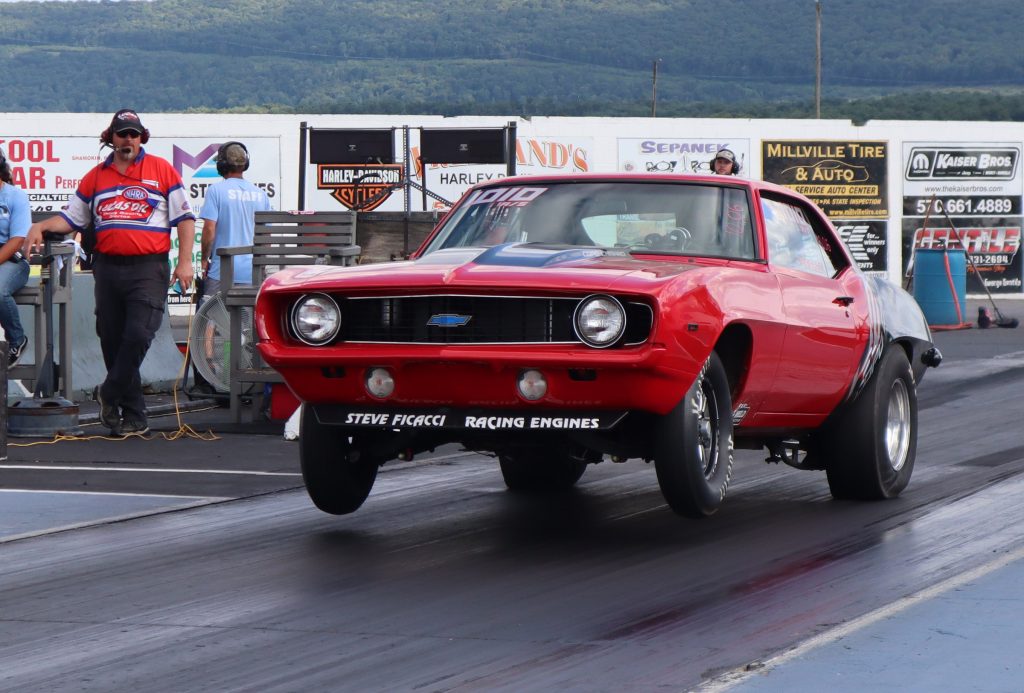
Wanting more excitement than even a nine-second small-tire 427 cubic inch Camaro could provide, Mike swapped out the Turbo 400 for a G-Force G101A four-speed manual transmission.
“I raced a 454 Corvette in F/SA years ago and I drove my brother Steve’s stick small-block Camaro a bunch, too. I sold the Vette to start a family, but my kids, Sloan, Stevie, Sienna and Michael, are at the age where me and my wife Sharon like taking them to the track. My mom and dad also go racing with the family and I appreciate everything they’ve done for us.” said Mike Ficacci.
“In coming back, I really wanted to focus on going fast and having fun driving the car. And there’s hardly anything more fun in sportsman drag racing then driving a manual transmission race car in A/Stock,” he added.
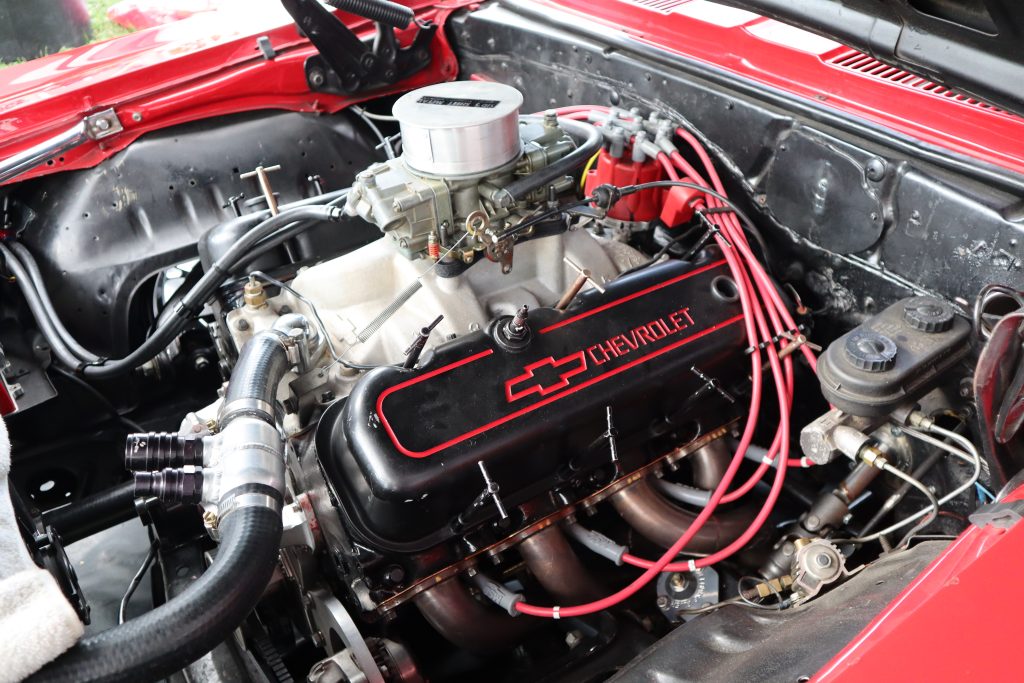
A well-known engine builder, Steve Ficacci Sr. (Steve Ficacci Racing Engines) prepared the Big Block in the Camaro when Calibro was driving, and it was freshened up for Mike’s efforts. “The car is setup as a COPO (Central Office Production Order) with the L72 427 that’s factory rated at 425 hp and factored by NHRA to 413 horsepower. It uses iron block and heads with 2.19/1.72 inch valves and 0.520 inch lift on the intake and exhaust. As per the rules, there’s no porting allowed, and we have to use the factory 780 Holley carb and stock Chevrolet aluminum intake. Stock rules do allow for headers and blueprinting, which brings compression just past the factory 11.0:1 factory spec. All in, the L72 in Ficacci’s Camaro produces 650 horsepower and 575 ft.-lbs. of torque.”
You may enjoy this article too: Behold the Mighty 1969 Chevy Camaro COPO ZL-1
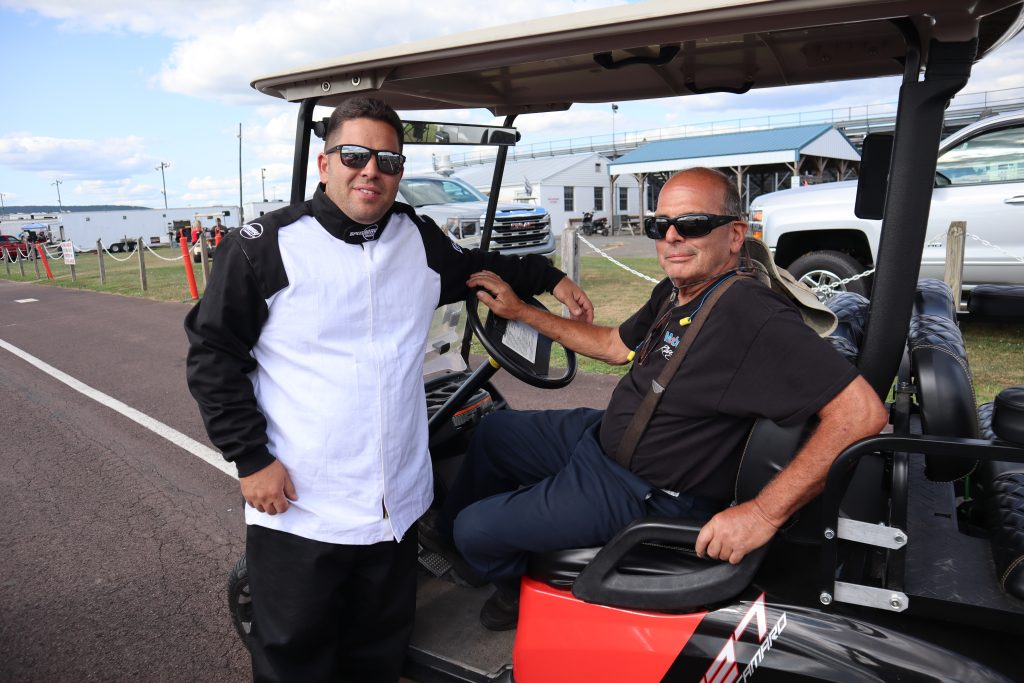
“The engine was tired, so my dad freshened it, taking advantage of what’s allowed in the class in terms of valve job, cam (any duration is allowed with stock lift), plus careful machining and assembly. I also changed the shocks, rear gear (from a 4.88 to a 5.13) and obviously the transmission. We also use a Boninfante adjustable clutch that’s designed to slip at the launch and grip as rpm climbs. While my dad has run sticks forever with his 396, this combination is just different. We’re also running a Mickey Thompson 9×30 inch Radial Slick, which is different than most stick guys in Stock. The common tire is the bias ply version. The radial should be quicker once we figure it out, but it’s unforgiving. We run 18-21 psi, vs like 10-13 with the other tire. When you spin the radial it’s violent, rattles the car and it doesn’t recover, when you stick the tire hard it bogs the engine. So, we must control slip in the clutch and we’re still learning how to maximize that,” he added.
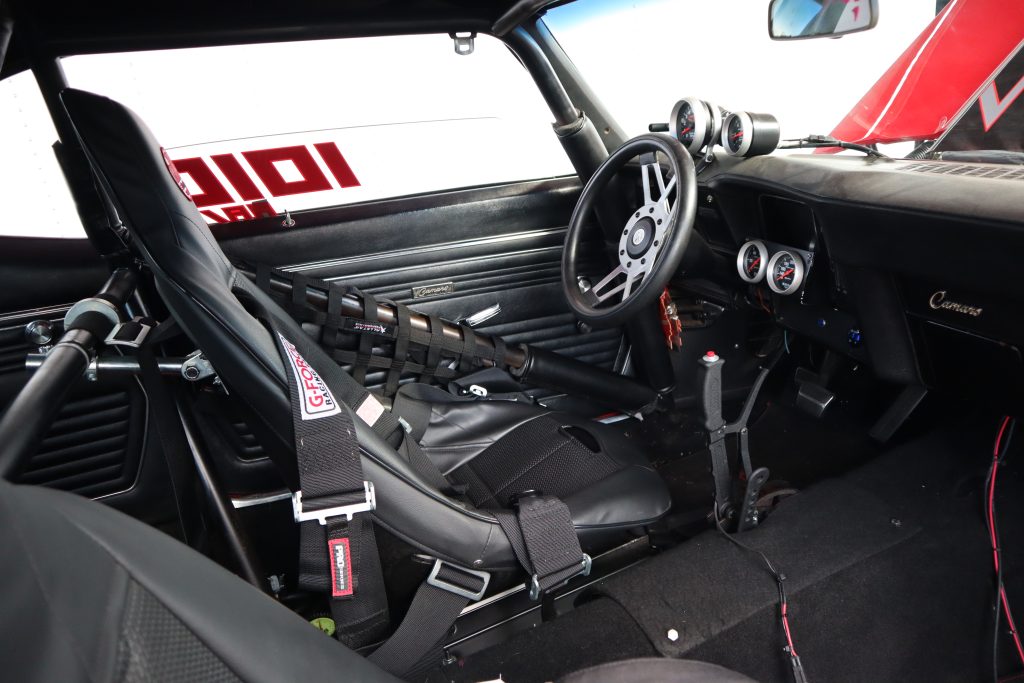
“As for performance, I went to two races with the automatic just to make some passes then we switched it over. It had run a best of 9.87 at 133 mph with the T400 at 3,410 in A/SA and we’ve already been 9.75 at 137.8 mph in A/S at 3,470 lbs. With the stick you’re not a passenger, you’re involved in the process, and you can’t compare the experience. On the starting line, when you have your foot to the wood, you’re prepared for it to do any number of different things. It could spin, drag the bumper or just do a small wheelie and go,” he added.
“It’s crazy fun,” said Ficacci. “I do the burnout in Second gear, then stage, deck it and dump the clutch. Launch is about 5,500 rpm and I shift at 8,000! On a good run it crosses the traps screaming at 8,300 rpm and 137 mph so it gets your attention,” he added. “In the future I’d like to run 9.68 and go after the A/S record and I’d like to win Class at Indy at the NHRA US Nationals.”
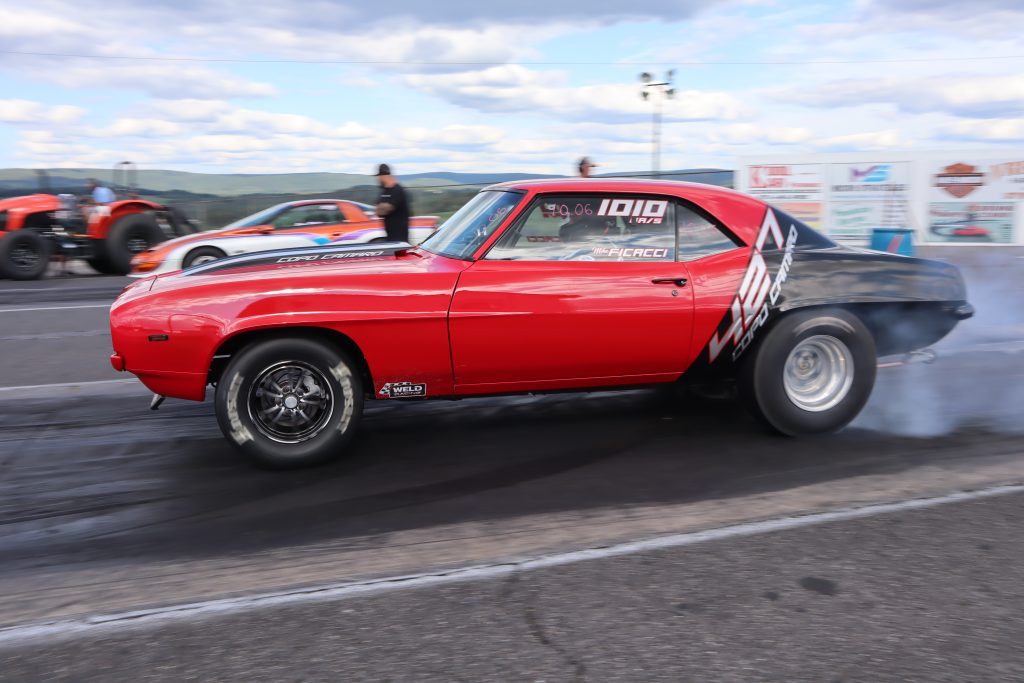

You’re cooler than you look Mike!
I just love when there pure muscle .no turbo or supercharger .the real deal I am old school.